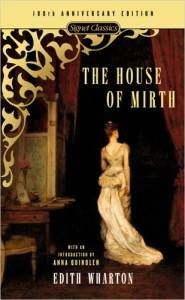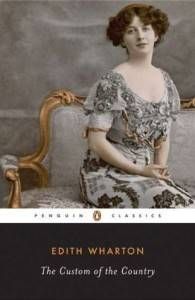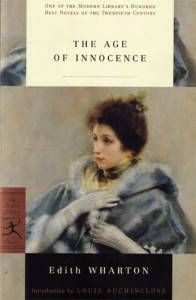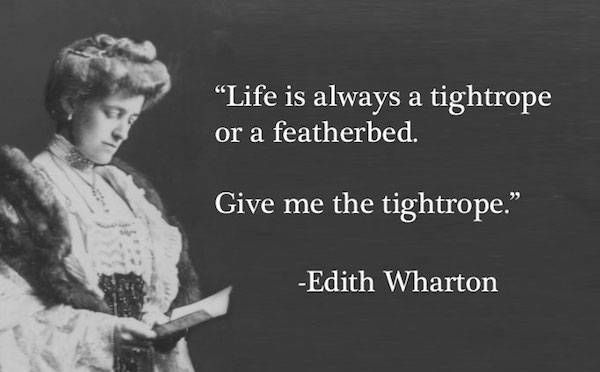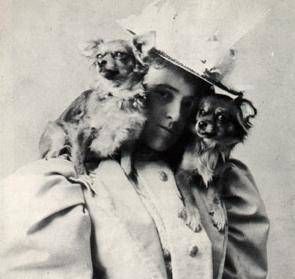
Reading Pathways: Edith Wharton
I was eighteen years old when I first fell in love with Edith Wharton’s The Age of Innocence. And when I say love, I do mean love: the book made me breathless and knocked me off my feet; I sighed over it when I was reading it and yearned for it when I wasn’t; and I always liked to keep it on hand wherever I went, just to be near to it. In retrospect, it’s not surprising that Wharton’s writing resonated so strongly with a teenager. Her prose is sharp and arch, and her stories depict fierce passion underlying rigid rules and social structures. But a decade later and I’m still going strong, for the same reasons and for more that I’ve discovered as I’ve read and re-read Edith Wharton over the years.
The House of Mirth by Edith Wharton
The best place to start with Edith Wharton is with her fourth (and second most famous) novel, The House of Mirth.
The House of Mirth charts the falling fortunes of Lilly Bart, a bright, vivacious upper-class woman raised to be an ornament to society — and more specifically, to a wealthy man. When the reader meets Lilly, her wealth and youth are running out just as her social and financial debts begin to mount, yet she struggles to either marry herself off to the highest bidder or imagine a life for herself beyond the one to which she was bred.
In The House of Mirth, Wharton paints a damning picture of a society that demands of women suffocating compliance and helplessness in exchange for a precarious and often degrading version security and status. Lilly Bart is an almost perfect product of her society, but it is in that almost — the space between a brilliant facade and the flicker of rebellious heart beneath — that Lilly’s tragic flaw lies.
The Custom of the Country by Edith Wharton
Written eight years after The House of Mirth, The Custom of the Country ’s similar focus and themes makes a perfect compare-and-contrast (and a good choice if bingeing on another House has left you with an appetite for more scheming).
The Custom of the Country is the story of Undine Spragg, a beautiful nouveau riche Midwestern heiress. Her family moves to New York with an eye for climbing the social ladder and legitimizing their ill-got gains. If Lilly is a failure in a system that demands loveless marriage as the price of stability and status, then Undine is a success — a success distinctly of the “be careful what you wish for” variety.
All that Lilly Bart’s innate moral compass prevents her from doing, Undine Spragg does with ease and a total lack of scruples. Undine marries her way to the top, ruthlessly leaving a trail of destruction and broken lives in her wake. Possessed of a truly boundless ambition that crosses class, country and moral lines, Undine Spragg is the literary successor to Thackeray’s Becky Sharp: utterly unsympathetic yet compulsively readable.
The Age of Innocence by Edith Wharton
I’m a firm believer in saving the best for last, and clearly for me The Age of Innocence is just that: the best of Wharton and a near-perfect novel itself.
The Age of Innocence follows Newland Archer, a young man from a moneyed old New York family whose perfect, socially-sanctioned life is utterly shaken when he meets his fiancee’s scandalous cousin, Countess Ellen Olenska, and they form a genuine intellectual and emotional connection that takes them both by surprise.
The Age of Innocence is, all at once, a romance, a coming-of-age story, and of course, a social commentary. Wharton again paints a picture of oppressive social customs that trapped Lilly Bart, but this is her most subtle portrayal of all. Each situation Newland and Ellen find themselves in feels as untenable yet inevitable as the last. There are no easy answers here, and no villains; just love and duty, and relationships that leave you forever changed. The Age of Innocence best exemplifies one of my favourite things about Edith Wharton, which is that she manages to balance wry social commentary with compassion. She brings her characters to vivid life, and lays their foibles, flaws and innermost desires painfully bare but never strips them of their humanity.
Who was Edith Wharton?
In a career spanning over 40 years, Edith Wharton published more than 40 books, including books on architecture and travel. She won a Pulitzer Prize for Fiction, and as The Mount reports, an honorary Doctorate of Letters from Yale University, and a full membership in the American Academy of Arts and Letters. Edith Wharton (1862-1937) is one of the best American authors, and deserves her place on your to-be-read list.
(Pssst: Want even more books set in New England or New York? We’ve got you covered with our 100 must-read lists. And learn more about Wharton’s fascinating life at the Edith Wharton Society’s page.)



